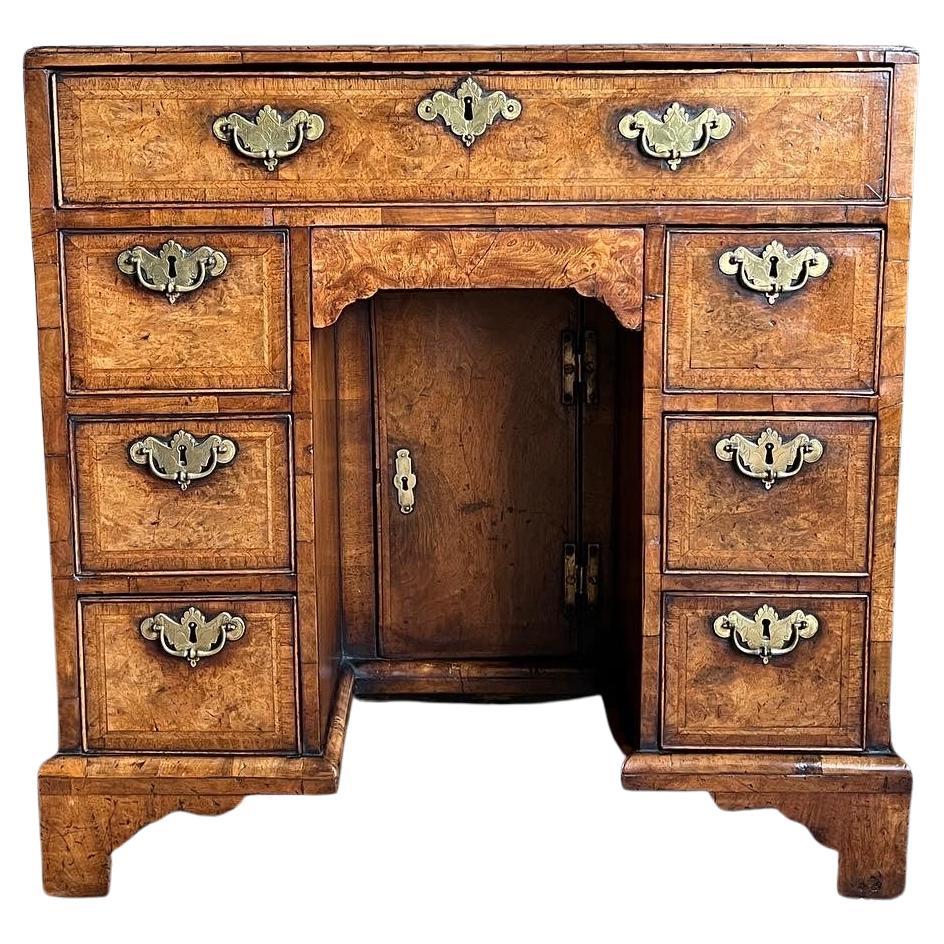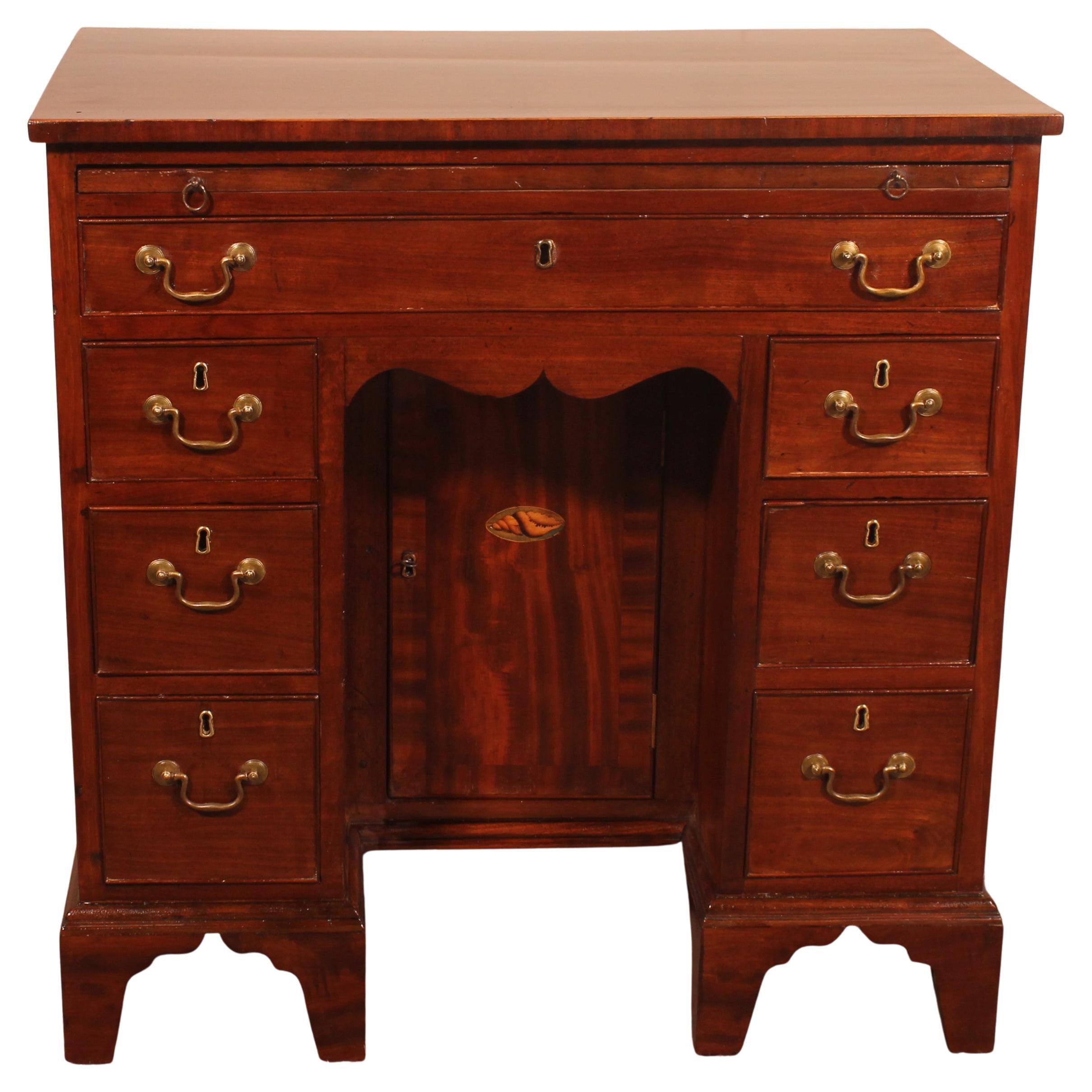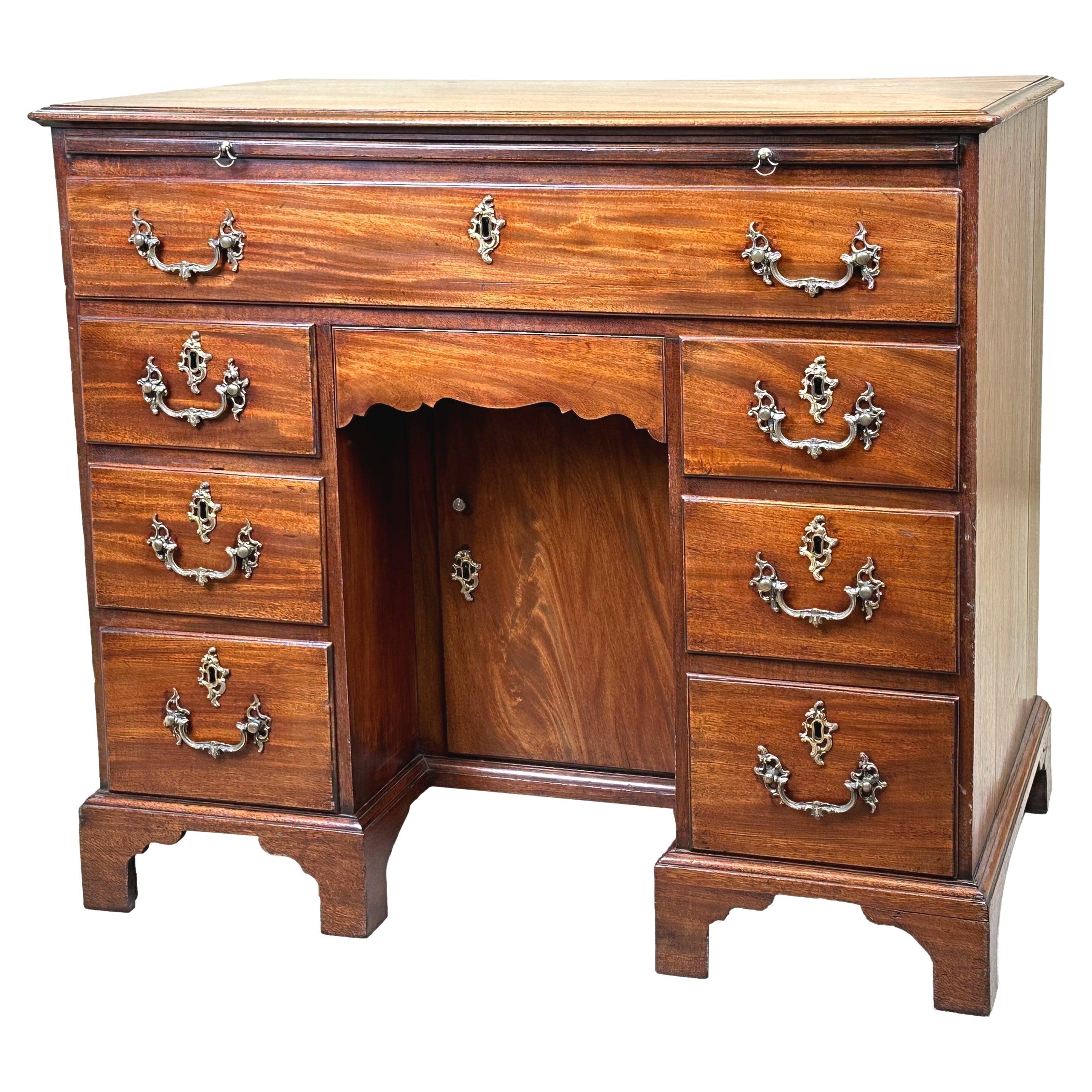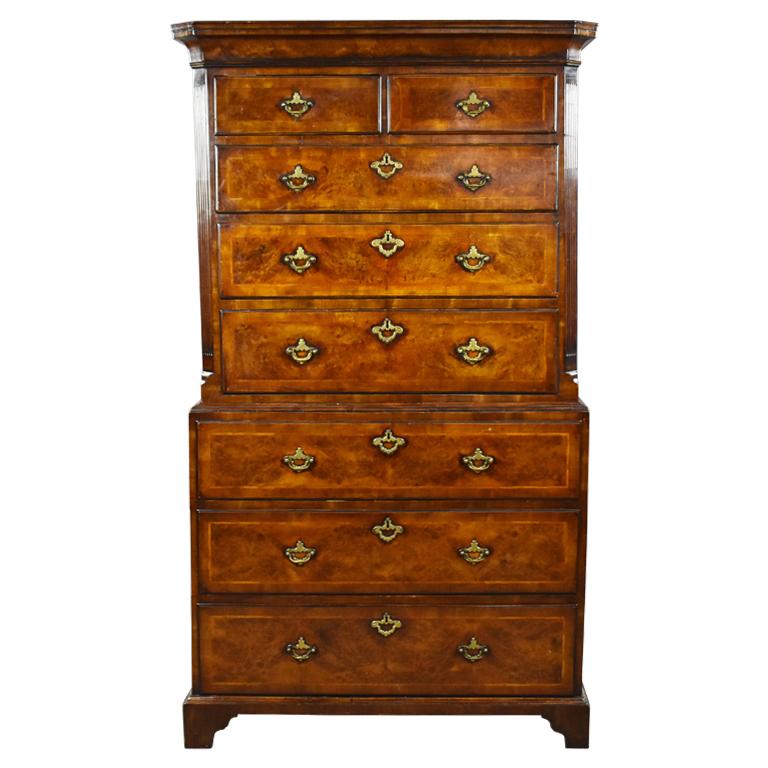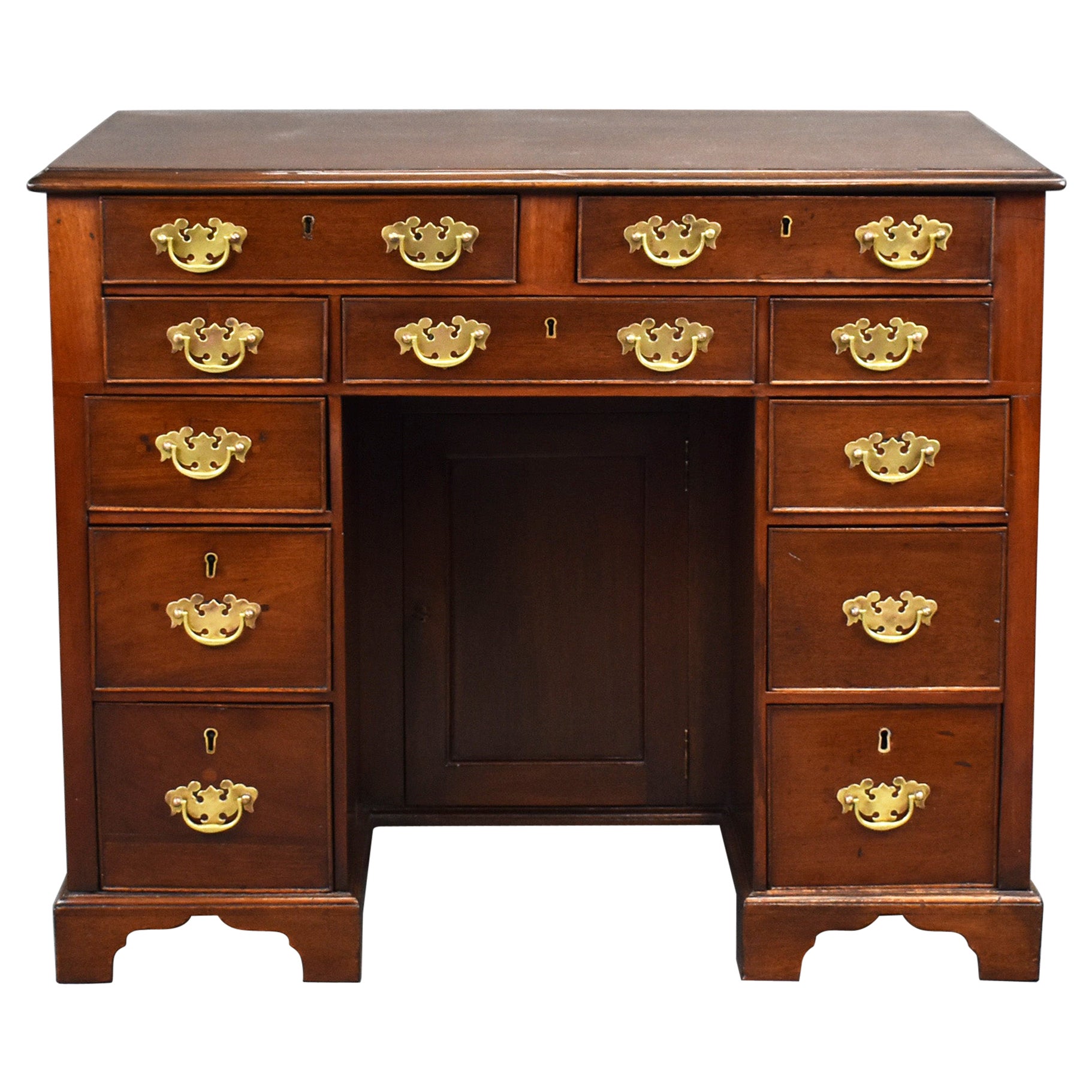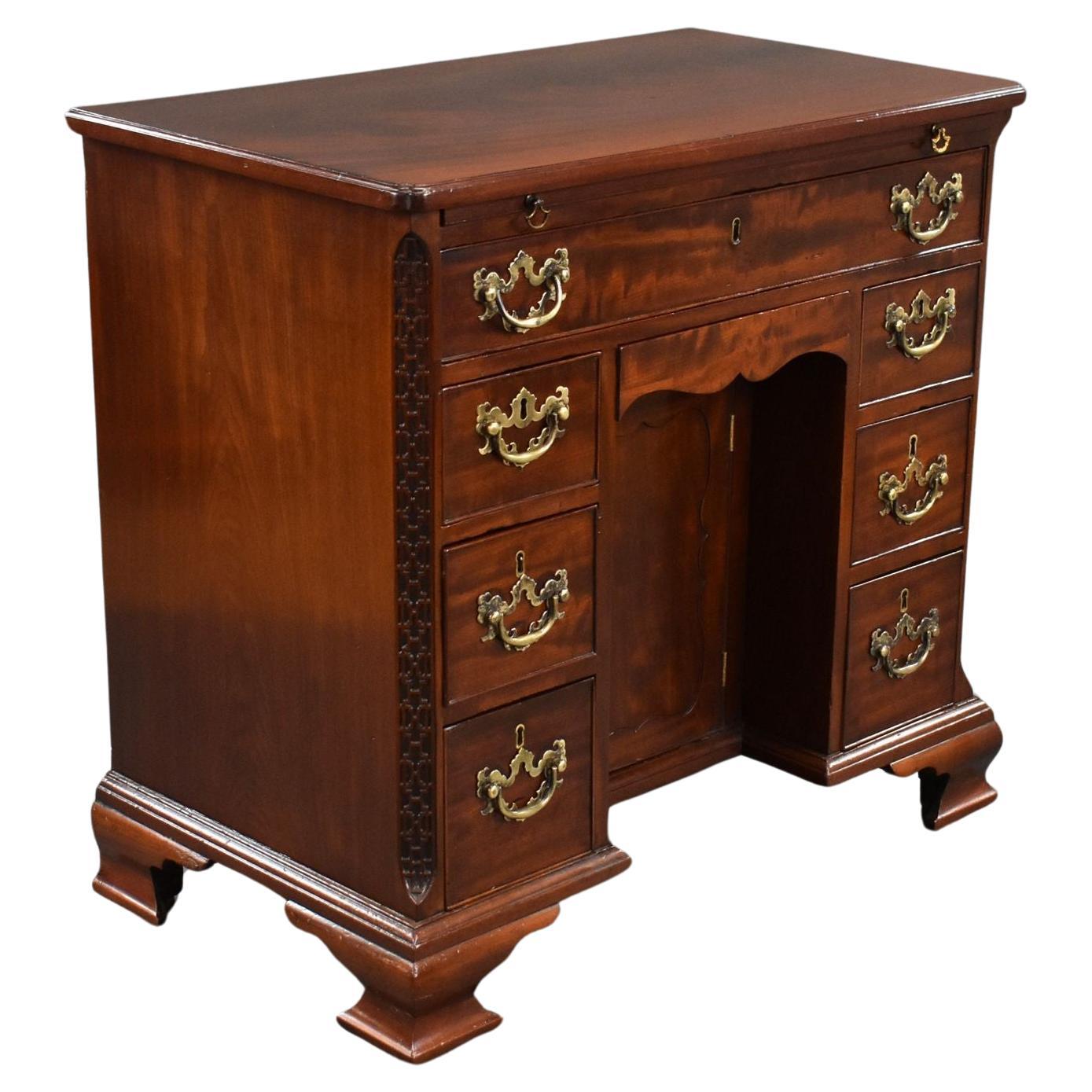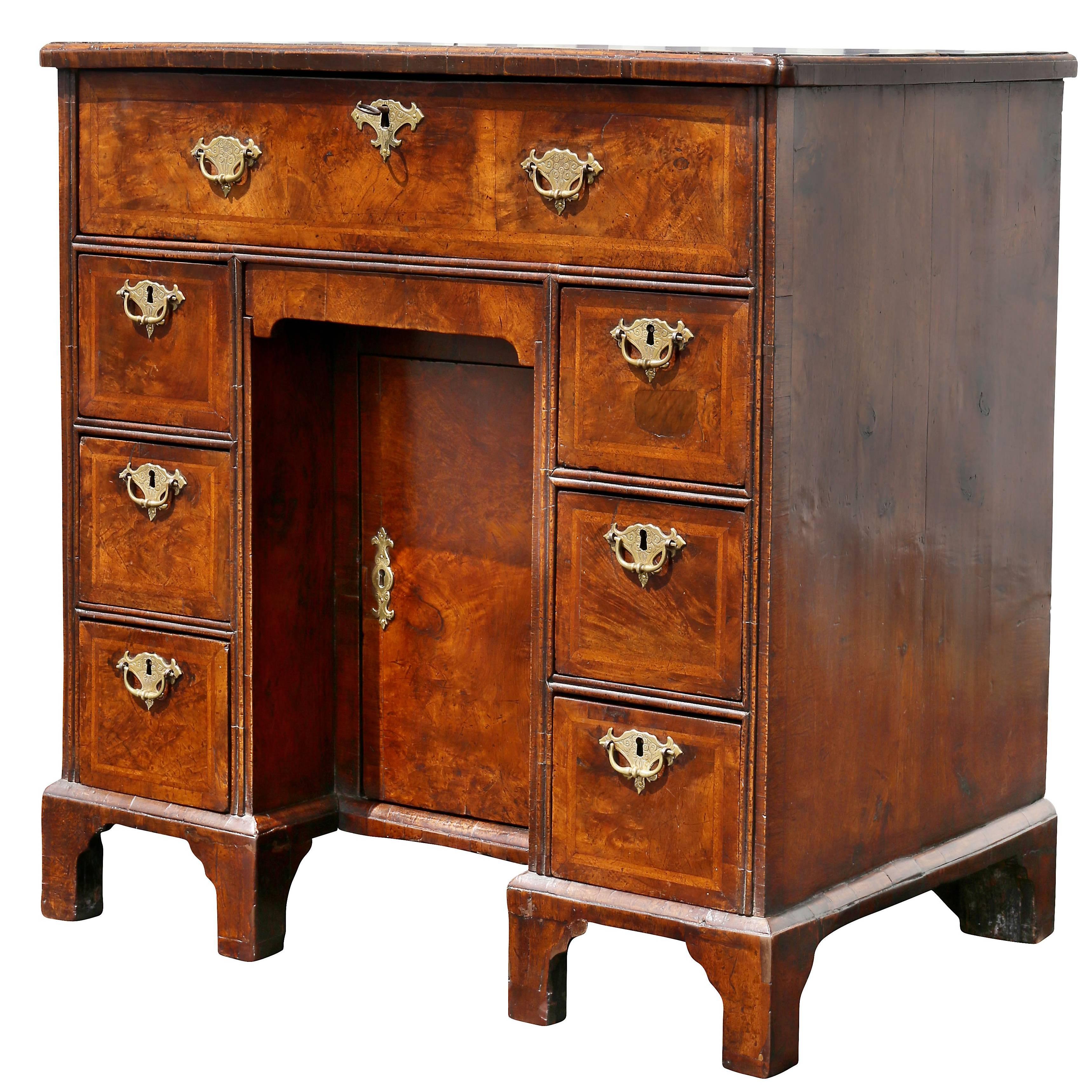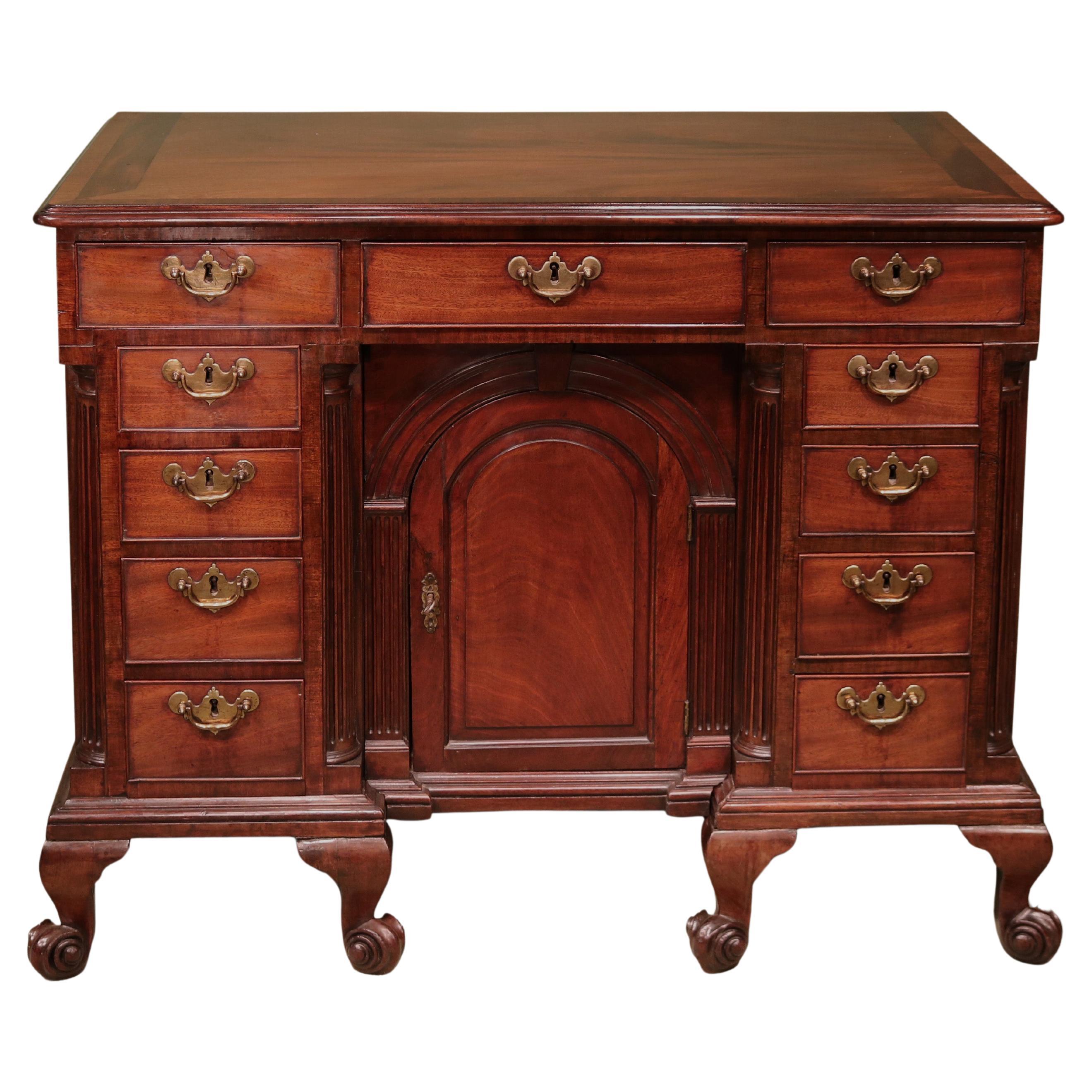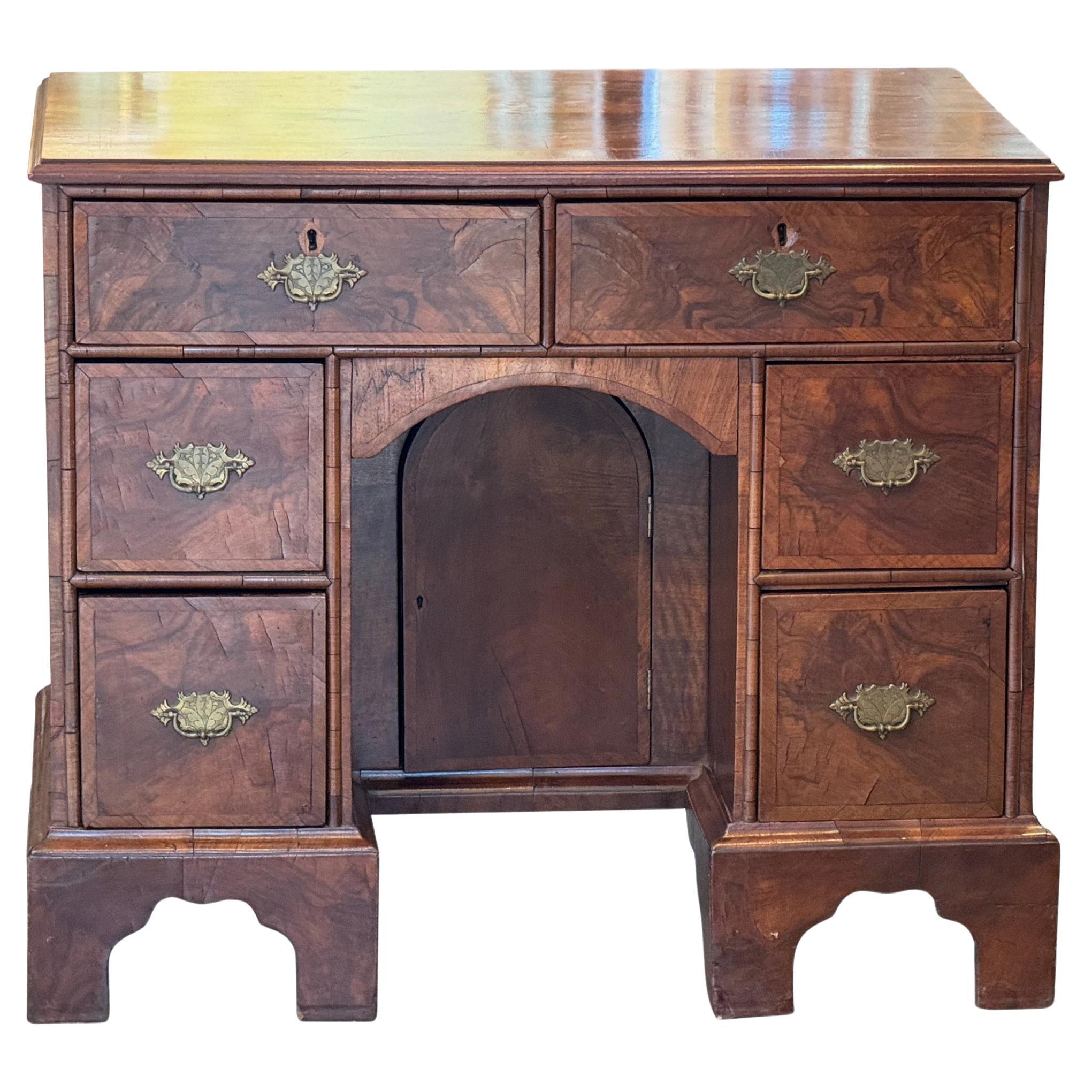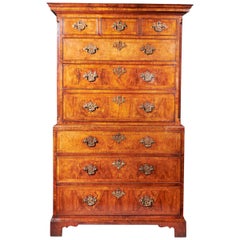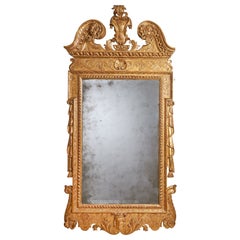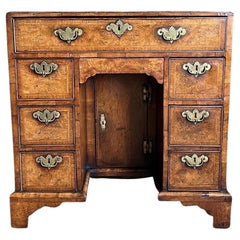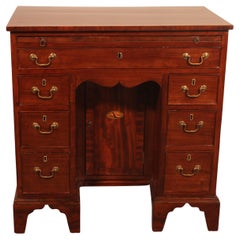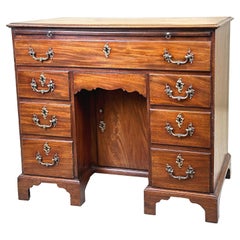
Rare Burr Walnut George II 18th Century Kneehole Desk, circa 1730-1740, England
View Similar Items
Want more images or videos?
Request additional images or videos from the seller
1 of 11
Rare Burr Walnut George II 18th Century Kneehole Desk, circa 1730-1740, England
About the Item
- Dimensions:Height: 29.53 in (75 cm)Width: 30.32 in (77 cm)Depth: 20.08 in (51 cm)
- Style:George II (Of the Period)
- Materials and Techniques:
- Place of Origin:
- Period:
- Date of Manufacture:1730-1740
- Condition:Wear consistent with age and use. It should be noted the piece is of the most wonderful colour and retains original brass hardware, locks and feet.
- Seller Location:Oxfordshire, GB
- Reference Number:1stDibs: LU4936224613662
About the Seller
5.0
Recognized Seller
These prestigious sellers are industry leaders and represent the highest echelon for item quality and design.
1stDibs seller since 2019
20 sales on 1stDibs
Associations
LAPADA - The Association of Arts & Antiques Dealers
More From This SellerView All
- A Fine 18th Century George II Figured Walnut Chest on Chest or Tallboy, 1740Located in Oxfordshire, United KingdomA Fine 18th Century George II Figured Walnut Chest on Chest or Tallboy, Circa 1740. England. In two parts divided by a cross grain moulding the reeded upper section consists of a c...Category
Antique 17th Century English George II Cabinets
MaterialsOak, Walnut, Burl
- Early 18th Century George I Figured Walnut Bachelors Chest, C.1720-1730Located in Oxfordshire, United KingdomA fine and rare early 18th-century compact George I figured walnut bachelors chest The quarter veneered feather and crossbanded top opens on original hinges to reveal a veneered int...Category
Antique Early 18th Century English George I Commodes and Chests of Drawers
MaterialsBrass
- A Rare 18th Century George II Carved Cut Gesso and Giltwood Mirror, Circa 1730Located in Oxfordshire, United KingdomThe acanthus egg and dart-carved swan neck pediment is surmounted with a carved armorial cartouche flanked by opposing C scrolls on an egg and dart plinth, leading down to the acanth...Category
Antique Early 18th Century English George II Pier Mirrors and Console Mi...
MaterialsGlass, Mirror, Giltwood
- Early 18th Century George I Figured Walnut Bureau BookcaseBy Peter MillerLocated in Oxfordshire, United KingdomA superb and exceptionally well proportioned early 18th century figured walnut ‘pagoda topped’ double dome bureau bookcase, circa 1720 England. The upper section is surmounted with what is believed to be the original solid walnut finials and soft bevelled mirror plates, opening to a removal bank of walnut veneered and feather banded drawers, cantered by pigeonholes below two shelves. Candle slides are neatly stowed below the bookcase doors to reflect the light. To the moulded bureau, the fall opens to reveal pigeonholes, long and short asymmetric drawers each beautifully veneered in figured walnut and feather banded, cantered by a cupboard door which neatly conceals an open compartment and drawer. Below the fall, two short and two long graduating oak lined drawers are each book-matched in superb sections of hand-cut figured walnut veneers over bun feet. It should be noted that this exceptional desk and bookcase, is not only of the finest cuts of figured walnut veneer but exquisitely made at the pinnacle of design which had gradually evolved predominantly in London, during the late 17thand early 18thcentury. The actual description 'desk-and-bookcase' appears to be first recorded in the accounts of the Royal cabinet-maker Gerrit Jensen (fl.1680-d.1715) who supplied several for the Royal Household from 1710 (Bowett, op. cit.), and another described as 'a walnut writing desk, the top for books and patons and glass in the doors asked' for the 5th Earl of Salisbury, Hatfield House. Another maker of this form of desk was the London cabinet-maker John Gumley (1691-1727) who advertised in Richard Steele's Lover on April 24 1714 that he 'hath taken for a Ware-house, and furnished all the upper part of the New Exchange in the Strand' continuing with an extensive list of his stock including 'Desks and Bookcases.' In 1714 he supplied one of these in walnut to James 1st Duke of Montrose for the sum of £11. Russian cabinetwork of this period was strongly influenced by Tsar Peter I return to Russia after his studies in London. He subsequently sent twenty-four cabinetmakers who were working in Amsterdam to London to train as furniture makers. One of these cabinetmakers named Fedor Martynov made furniture for the Empress Anna Ioannovna. Martynovs drawings are almost identical to the present piece. Literature Mallett’s Great English Furniture, London: Bullfinch Press 1991, p.248, fig 287, by Lanto Synge, English Furniture 1660-1714 From Charles II to Queen Anne, by Dr Adam Bowett, Woodbridge: Antique Collector’s Club, 2002 Chapter 7 Case Furniture 1689–1714 pp.221-223 fig. 7:53 A walnut bureau bookcase of the same form and period sold from the private collection of Patricia Kluge...Category
Antique Early 18th Century British George I Bookcases
MaterialsWalnut
- 18th Century George II Tavern or Act of Parliament Clock, Circa 1740By Thomas MooreLocated in Oxfordshire, United KingdomTavern clock by Thomas Moore Ipswich A fine eighteenth-century tavern clock with a japanned shield dial and gilt decorations, signed at the bottom o...Category
Antique 18th Century English George II Wall Clocks
MaterialsOak, Pine
- Rare 18th Century George II Musical Table Clock by Matthew King, circa 1735Located in Oxfordshire, United KingdomA rare George II musical table clock by Matthew King, circa 1735. This unusual eight-day spring-driven table clock was made by Matthew King, wh...Category
Antique 18th Century English George II Table Clocks and Desk Clocks
MaterialsSilver, Brass
You May Also Like
- George II Burr Walnut Kneehole Desk, c.1735Located in London, GBA George II Burr walnut and feather banded kneehole desk with caddy moulded top, c.1735. Of exceptional patina & colour. Measures - 75cm H x 74cm W x 47cm D.Category
Antique 18th Century British George I Desks
MaterialsOak, Walnut
- Small 18th Century Mahogany Kneehole Desk George IIILocated in Brussels, BrusselsSuperb small chest of drawers/writing desk/secretaire in mahogany from the 18th century called Kneehole desk from the George III period Indeed, these small pieces of furniture are...Category
Antique 18th Century British Georgian Desks
MaterialsMahogany
- Georgian 18th Century Mahogany Kneehole DeskLocated in Bedfordshire, GBA superb quality and extremely attractive 18th century, Chippendale period, georgian mahogany kneehole desk, having well figured rectangular top over slide, central cupboard and arrangement of drawers, retaining original rococo brass handles, raised on original shaped bracket feet. Generally, kneehole deeks are regarded as a smaller, more compact version of the more typically found pedestal desk, with some form of an arrangement of drawers around a central set recessed cupboard being the form which one can expect to come across. There are of course various different designs to be found along the same theme, but as a general rule that is the form you will usually find in a georgian kneehole desk...Category
Antique Mid-18th Century English Georgian Desks
MaterialsMahogany
- George II Walnut Kneehole DeskLocated in Folkestone, GBAn especially fine quality George II period burr walnut kneehole desk with quartered 'bookmark-veneered' top with herringbone inlay and cross-band...Category
Antique Early 18th Century English George II Desks
MaterialsWalnut
- 18th Century English George II Burr Walnut Chest on ChestLocated in Chelmsford, EssexFor sale is a good quality George II Burr walnut chest on chest, having a flared cornice above an arrange of five drawers in the top, each ...Category
Antique Early 18th Century English George II Commodes and Chests of Drawers
MaterialsWalnut
- 18th Century English George III Mahogany Kneehole DeskLocated in Chelmsford, EssexFor sale is a George III mahogany kneehole desk, having a total of 11 drawers and a cupboard to the centre, the desk stands on small ...Category
Antique Late 18th Century English George III Desks
MaterialsMahogany
Recently Viewed
View AllMore Ways To Browse
Walnut Kneehole Desk
Oak Kneehole
Elizabeth Cabinet
Oak Kneehole Desk
Antique Walnut Kneehole Desk
18th Century Bachelors Chest
Bachelor Chest 18th
George Ii Walnut Chest On Chest
Georgian Bachelors Chest
Late 17th Century Oak Chest Of Drawers
Oak Bachelor Chest
Georgian Kneehole Desk
Henry Ii Cabinet
George Burl Chest
Henry Ii Walnut
Burl Bachelor Chest
Kneehole Burl
George Ii Bachelors Chest
